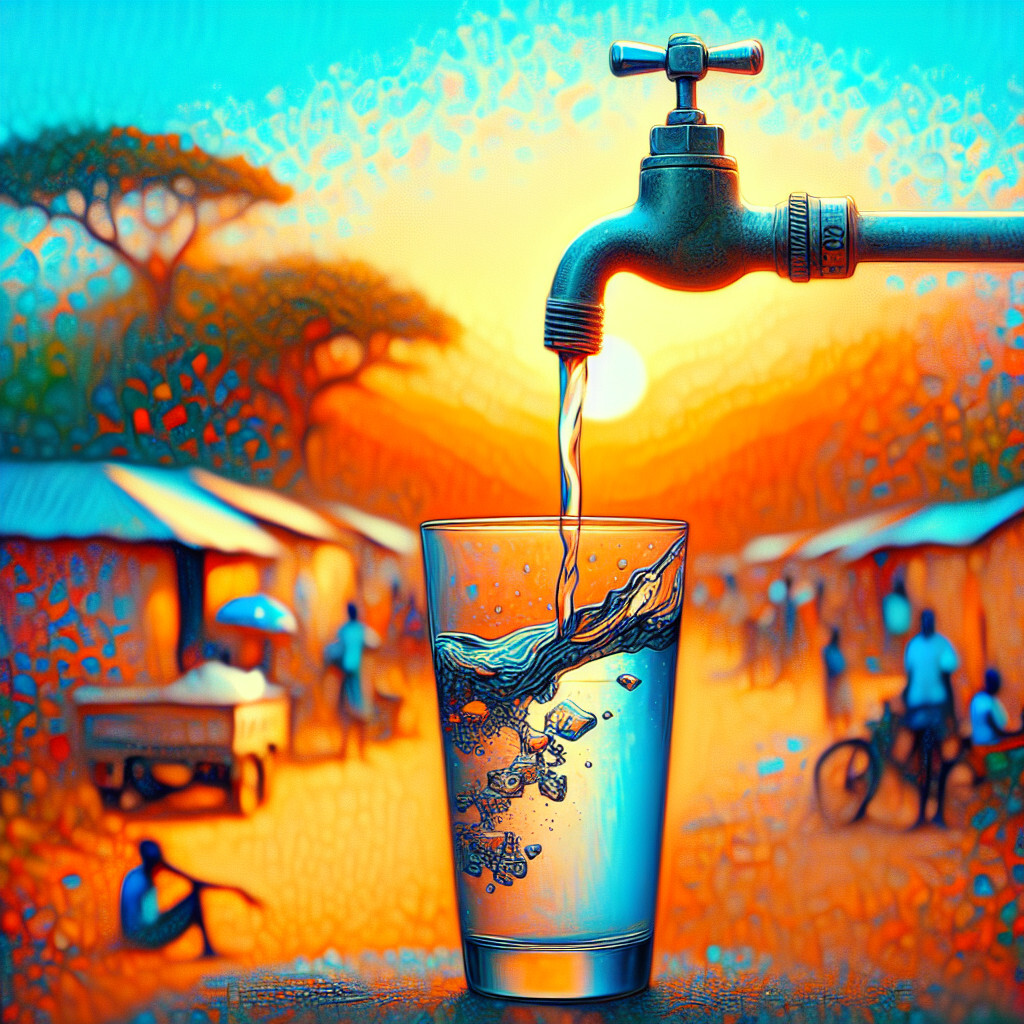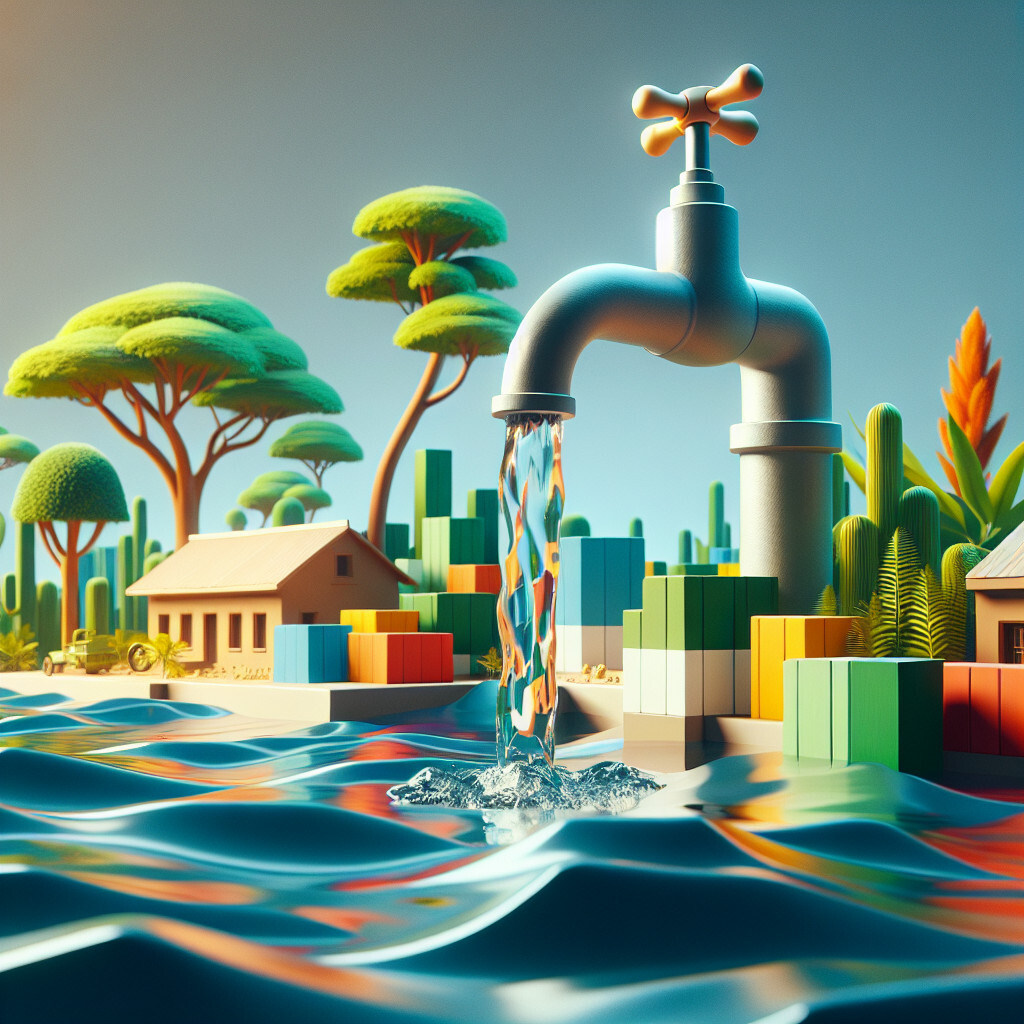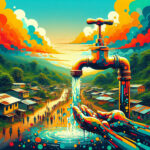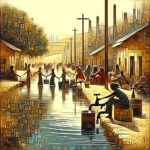-
Table of Contents
- Introduction
- Understanding the Quality of Tap Water in the Central African Republic
- Challenges and Solutions: The State of Tap Water in the Central African Republic
- The Impact of Poor Tap Water Quality on Health in the Central African Republic
- Exploring the Future of Tap Water Infrastructure in the Central African Republic
- Q&A
- Conclusion
“Central African Republic’s Tap Water: A Struggle for Purity and Accessibility.”
Introduction

The tap water in the Central African Republic is generally not safe for consumption due to the country’s underdeveloped infrastructure and lack of access to clean water sources. Many areas suffer from water scarcity and the available water is often contaminated with harmful bacteria and parasites, leading to a high risk of waterborne diseases. Therefore, it is recommended to drink bottled or boiled water. Despite ongoing efforts by international organizations to improve the situation, access to clean and safe drinking water remains a significant challenge for a large portion of the population.
Understanding the Quality of Tap Water in the Central African Republic
The Central African Republic (CAR), a landlocked country in the heart of Africa, is known for its rich cultural heritage and diverse natural resources. However, despite its wealth in natural resources, the country faces significant challenges in providing clean and safe tap water to its citizens. This article aims to shed light on the quality of tap water in the Central African Republic, a topic of great importance given the critical role water plays in public health and economic development.
The quality of tap water in the Central African Republic is, unfortunately, far from satisfactory. The country’s water infrastructure is severely underdeveloped, and the existing systems are often poorly maintained. This results in a significant portion of the population lacking access to clean and safe drinking water. According to the World Health Organization, only about half of the population in the Central African Republic has access to clean water. This situation is even more dire in rural areas, where access to clean water can drop to as low as 20%.
The poor quality of tap water in the Central African Republic is largely due to contamination. The country’s water sources are often polluted with harmful substances such as bacteria, viruses, and parasites. This contamination can occur at the source, during transportation, or at the point of use. For instance, open defecation, a common practice in many rural areas, can contaminate water sources. Similarly, the use of unclean containers for water storage can introduce harmful microorganisms into the water.
The consequences of consuming contaminated tap water are severe. Waterborne diseases such as cholera, typhoid, and diarrhea are common in the Central African Republic, and they contribute significantly to the country’s high child mortality rate. Moreover, the lack of clean water also impacts other aspects of life, such as education and economic productivity. Children who are frequently ill from waterborne diseases often miss school, and adults who are sick cannot work, which further exacerbates the country’s poverty levels.
Efforts are being made to improve the quality of tap water in the Central African Republic. International organizations, such as UNICEF and the World Bank, are investing in water infrastructure projects in the country. These projects aim to increase access to clean water by constructing new water systems and repairing existing ones. They also focus on promoting good hygiene practices to prevent contamination at the point of use.
However, these efforts face significant challenges. The Central African Republic has been plagued by political instability and conflict for many years, which hampers the implementation of water infrastructure projects. Moreover, the country’s difficult terrain and lack of road infrastructure make it challenging to transport materials and equipment to remote areas.
In conclusion, the quality of tap water in the Central African Republic is a pressing issue that requires urgent attention. While efforts are being made to improve the situation, significant challenges remain. It is crucial for the international community to continue supporting the Central African Republic in its quest to provide clean and safe tap water to all its citizens. After all, access to clean water is not just a basic human right; it is also a cornerstone of public health and economic development.
Challenges and Solutions: The State of Tap Water in the Central African Republic
The Central African Republic (CAR), a landlocked country in the heart of Africa, is grappling with a myriad of challenges, among which the state of tap water stands out as a critical issue. The quality and accessibility of tap water in the CAR have been a longstanding concern, with a significant portion of the population lacking access to clean and safe drinking water. This article aims to shed light on the current state of tap water in the CAR, the challenges faced, and potential solutions to this pressing issue.
The CAR is one of the poorest countries in the world, and its water infrastructure reflects this reality. The country’s water supply system is largely underdeveloped, with only a small fraction of the population having access to piped water. The majority of the population relies on surface water from rivers, lakes, and ponds, which are often contaminated with harmful bacteria and parasites. This lack of access to clean tap water has severe implications for public health, contributing to the spread of waterborne diseases such as cholera and typhoid.
Moreover, the ongoing conflict in the CAR has further exacerbated the water crisis. The instability has hindered the maintenance and development of water infrastructure, leading to frequent water shortages and further limiting access to clean water. The conflict has also displaced thousands of people, forcing them to live in camps where access to clean water is even more limited.
Despite these challenges, efforts are being made to improve the state of tap water in the CAR. International organizations, such as UNICEF and the World Health Organization, are working alongside the CAR government to develop and implement strategies to improve water supply and sanitation. These strategies include the construction of new water supply systems, the rehabilitation of existing ones, and the promotion of hygiene education.
One of the key solutions being pursued is the drilling of boreholes. Boreholes provide a more reliable and cleaner source of water compared to surface water. They are also less susceptible to contamination, making them a safer option for drinking water. However, drilling boreholes is a costly and time-consuming process, and the country’s limited resources and ongoing conflict pose significant challenges to this solution.
Another potential solution is rainwater harvesting. The CAR has a tropical climate with a long rainy season, making rainwater harvesting a viable option for supplementing the water supply. Rainwater can be collected, stored, and treated for use as drinking water, reducing reliance on contaminated surface water. However, this solution also requires significant investment in infrastructure and education to ensure the safe and effective use of harvested rainwater.
In conclusion, the state of tap water in the Central African Republic is a complex issue, shaped by a combination of economic, political, and environmental factors. While the challenges are significant, there are potential solutions that, with sufficient investment and commitment, could significantly improve access to clean and safe drinking water. As efforts continue to address this critical issue, the hope is that the people of the CAR will one day have the access to clean tap water that is a fundamental human right.
The Impact of Poor Tap Water Quality on Health in the Central African Republic
The Central African Republic (CAR), a landlocked country in the heart of Africa, is grappling with a myriad of challenges, one of which is the poor quality of tap water. This issue has far-reaching implications, particularly on the health of the country’s residents. The quality of tap water in the Central African Republic is a matter of grave concern, as it directly impacts the health and wellbeing of its citizens.
The tap water in the Central African Republic is often contaminated with harmful bacteria, viruses, and parasites. This is primarily due to inadequate sanitation facilities and poor waste management systems. The water sources are often polluted with human and animal waste, leading to the spread of waterborne diseases. The lack of clean drinking water is a significant contributor to the high rates of morbidity and mortality in the country.
The most common diseases associated with poor water quality in the Central African Republic include cholera, typhoid, and diarrhea. Cholera, a severe bacterial infection, is often caused by ingesting water or food contaminated with the Vibrio cholerae bacterium. Typhoid fever, another bacterial infection, is spread through contaminated food and water. Diarrhea, on the other hand, can be caused by a variety of pathogens, including bacteria, viruses, and parasites, all of which can be present in contaminated water.
Children are particularly vulnerable to these diseases. According to UNICEF, diarrhea is the second leading cause of death among children under five in the Central African Republic. This is a direct consequence of the poor quality of tap water, coupled with inadequate sanitation facilities. Moreover, the frequent bouts of diarrhea can lead to malnutrition in children, further compromising their immune system and making them more susceptible to other diseases.
The poor quality of tap water also has indirect effects on the health of the population. For instance, the time and effort spent on fetching water from distant sources often result in physical exhaustion and stress, particularly for women and children who are usually tasked with this chore. This not only affects their physical health but also their mental wellbeing.
Furthermore, the lack of access to clean water hampers the provision of healthcare services. Many healthcare facilities in the Central African Republic do not have access to clean water, making it difficult to maintain hygiene and prevent the spread of infections. This is particularly problematic in the context of surgical procedures and childbirth, where clean water is essential to prevent infections.
In conclusion, the poor quality of tap water in the Central African Republic has a profound impact on the health of its citizens. It is a major contributor to the high rates of waterborne diseases, particularly among children. It also indirectly affects the health of the population by causing physical exhaustion and stress, and by hampering the provision of healthcare services. Addressing this issue is therefore crucial for improving the health and wellbeing of the people in the Central African Republic. It requires concerted efforts from the government, international organizations, and local communities to improve the water and sanitation infrastructure, and to promote hygiene practices.
Exploring the Future of Tap Water Infrastructure in the Central African Republic
The Central African Republic (CAR), a landlocked country in the heart of Africa, is home to a population that faces significant challenges in accessing clean and safe tap water. The country’s tap water infrastructure is in a dire state, largely due to years of political instability, conflict, and underinvestment. This has resulted in a situation where a significant proportion of the population lacks access to clean drinking water, a basic human necessity.
The current state of the tap water infrastructure in the Central African Republic is characterized by a lack of adequate facilities and systems to provide clean water to the population. The existing water supply systems are often outdated and poorly maintained, leading to frequent breakdowns and water shortages. Moreover, the country’s water sources are often contaminated due to poor sanitation practices and lack of waste management systems, making the available water unsafe for consumption.
The future of tap water infrastructure in the Central African Republic, however, is not entirely bleak. There are several initiatives underway aimed at improving the situation. International organizations, non-governmental organizations (NGOs), and the government are working together to develop and implement strategies to improve the country’s water infrastructure.
One of the key strategies being pursued is the rehabilitation and expansion of the existing water supply systems. This involves repairing the damaged infrastructure, upgrading the outdated systems, and extending the water supply networks to reach more people. The aim is to increase the capacity of the systems to provide a reliable supply of clean water to the population.
Another strategy is the improvement of water quality. This is being achieved through the introduction of water treatment facilities and the promotion of good sanitation practices. The goal is to ensure that the water supplied to the population is safe for consumption, thereby reducing the risk of waterborne diseases.
Furthermore, there is a focus on building resilience into the water supply systems. This involves designing and constructing the systems in a way that they can withstand shocks and stresses, such as those caused by climate change and conflict. The aim is to ensure that the systems can continue to provide a reliable supply of water even in the face of adversity.
In addition, there is an emphasis on community involvement in the management of the water supply systems. This is based on the recognition that the sustainability of the systems depends on the active participation of the communities they serve. The communities are being empowered to take ownership of the systems, to participate in their operation and maintenance, and to contribute to their financing.
The future of tap water infrastructure in the Central African Republic, therefore, holds promise. While the challenges are significant, the efforts being made to address them are equally substantial. With continued commitment and investment, it is possible to transform the country’s tap water infrastructure, to ensure that every citizen has access to clean and safe water. This is not just a matter of improving the quality of life for the people of the Central African Republic, but also a matter of upholding their basic human rights.
Q&A
1. Question: Is the tap water in the Central African Republic safe to drink?
Answer: No, the tap water in the Central African Republic is generally not safe to drink due to contamination and lack of proper sanitation.
2. Question: What are the main issues with the tap water in the Central African Republic?
Answer: The main issues with the tap water in the Central African Republic include contamination with harmful bacteria, viruses, and parasites, as well as a lack of access to clean water in many areas.
3. Question: How many people in the Central African Republic have access to clean tap water?
Answer: According to UNICEF, only about 35% of the population in the Central African Republic has access to clean drinking water.
4. Question: What is being done to improve the tap water situation in the Central African Republic?
Answer: Various international organizations, including UNICEF and the World Health Organization, are working to improve water sanitation and access to clean water in the Central African Republic. This includes building new water supply systems and promoting hygiene education.
Conclusion
The tap water in the Central African Republic is generally not safe for consumption due to contamination and lack of proper sanitation infrastructure. Many areas lack access to clean drinking water, leading to health issues among the population.






